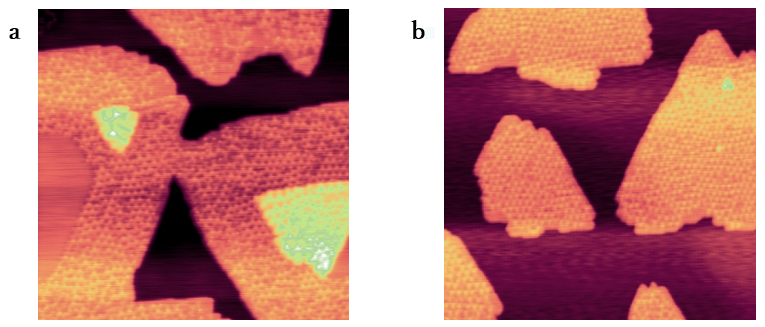MANA International Symposium 2025
Quantum Materials - 07
Abstract
Moiré superlattices caused by a crystal orientation or lattice mismatch, emerge moiré potentials with longer periods than the lattice. The moiré miniband can cause the formation of flat band
So, the purpose of our research at the moment is improving the homogeneity of our sample to supply four-electrode conductivity measurements. Thereby we performed experiments to search for the best condition of moiré formation.
As our next experiment, to clearly figure out the thickness dependence of moiré pattern, we designed a experiment using mask to evaporate Bi on Si(111) substrate to get a Bi thickness gradation structure (Fig.1). The result shows that moiré crystallinity doesn’t depend much on substrate thickness.
In our latest experiment, to obtain a moiré pattern with improved crystallinity, we grew Sb on a Bi substrate at an ultra-low temperature of approximately 100 K. By freezing the Bi substrate, Sb was able to form a well-ordered atomic lattice structure. The result was quite ideal—the moiré pattern appeared more stable compared to the room-temperature case. With better periodicity over a large scale, we expect it to exhibit distinct behavior in transport experiments.

Reference
- Cao, Y., Fatemi, V., Fang, S. et al., Nature 556, 43–50 (2018). DOI: 10.1038/nature26160
- Nakamura, T., Chen, Y., Nemoto, R. et al., Commun Mater 5, 167 (2024). DOI: 10.1038/s43246-024-00615-z

